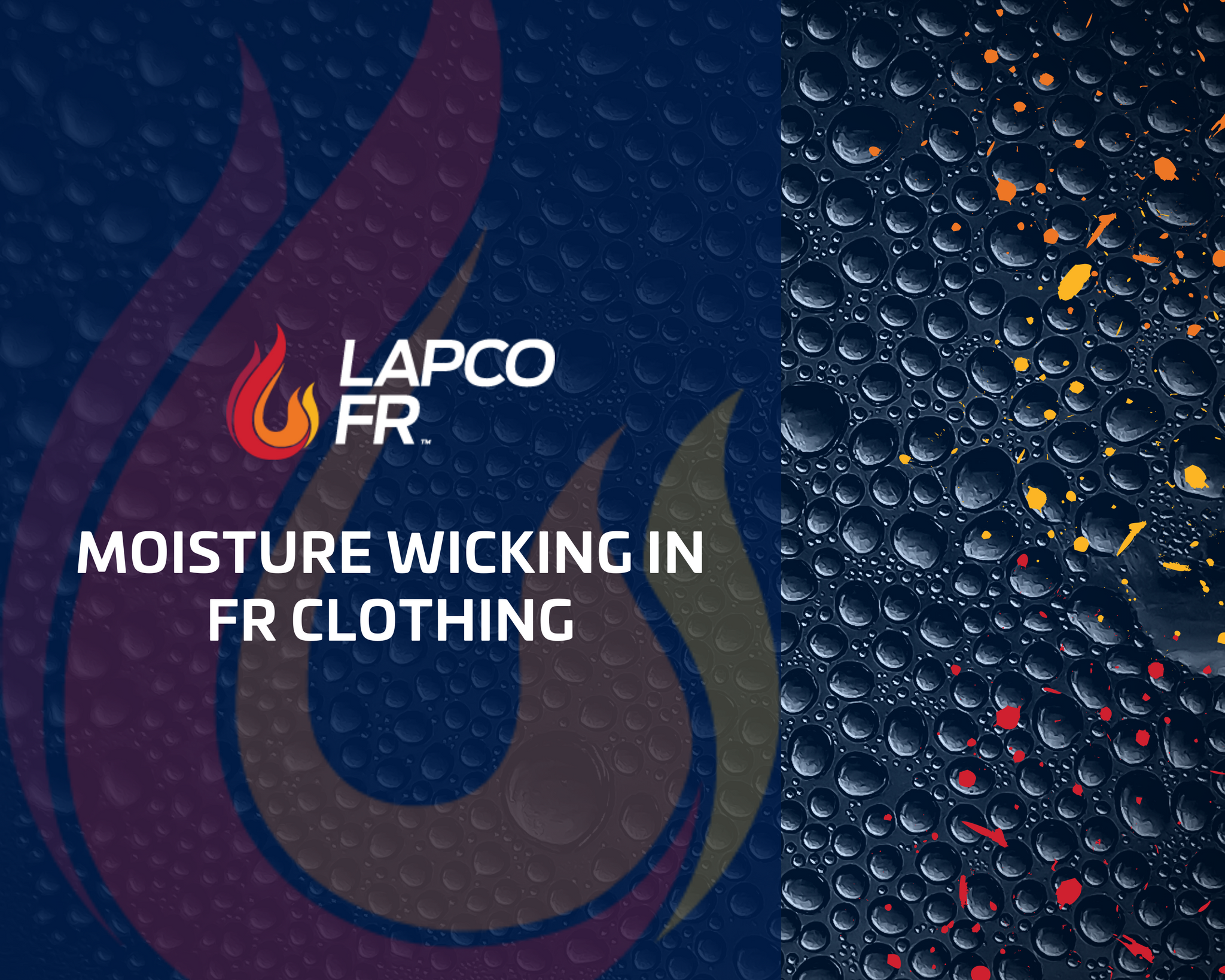Anyone who has ever worked a physically demanding job will agree that trudging around the job site in a sweaty shirt is a miserable experience. This is especially true if the job requires an additional layer of safety, like using flame-resistant (FR) clothing. The simple solution? Use FR workwear made with high-performance moisture-wicking fabric.
What Does Moisture-Wicking Mean?
You've likely seen the term floating around if you've shopped for sportswear anytime within the past decade. "Moisture-wicking" means the capability to drain away or absorb liquid from one surface and transfer it to another. When you apply this to clothing and fabric, you get a shirt that leaves you cool and dry even after you sweat buckets.
Moisture-wicking fabric draws sweat away from your skin and transfers it to the outer side of your shirt. It achieves this through a nifty scientific process called "capillary action." Named after the tiniest blood vessels in our body, capillary action happens when you put liquid next to a very thin tube.
To illustrate: imagine putting a straw in a glass of water. Nothing happens, right? However, if you shrink that straw small enough (say, millimeter-level small enough), the water will climb up the straw on its own, no intervention required. That's because the "adhesive forces" (water's tendency to stick to the sides of the straw) are greater than the "cohesive forces" (water's tendency to stick to itself).
That same process happens throughout millions of tiny channels in moisture-wicking fabrics, thus drawing your sweat away and letting it evaporate on the shirt's outer layer. Companies have improved their fabric technology throughout the years, with thinner fibers for more wicking channels and hydrophilic (i.e., water-loving) finishes that draw sweat in more effectively.
How Moisture-Wicking Fabric Works in Flame-Resistant Workwear
Moisture-wicking fabrics are commonplace in sportswear, but you may not have considered their importance to the comfort of your flame-resistant workwear.
Moisture-wicking fabric is available in most types of work clothing, especially shirts, pants, and coveralls. It works the same in sportswear and workwear. Still, it does have some additional comfort and safety benefits when used in FR workwear.
The Comfort and Safety Benefits of Moisture-Wicking Fabric
The energy sector, including oil and gas companies, electric utilities, wind energy companies, and petrochemical processing plants, usually requires work in potentially dangerous conditions. The Occupational Safety and Health Administration (OSHA) requires companies to provide FR workwear as part of employees' personal protective equipment (PPE).
However, just because FR workwear is necessary doesn't mean it has to be uncomfortable, though it can be if you are not wearing suitable fabrics for your work environment. Using FR uniforms made with moisture-wicking fabric can help ensure the wearer's comfort and safety in different weather conditions and work environments. Some of the benefits it provides are:
It Reduces Distraction for Better Work Performance
Working for long hours in hot weather is bad enough, but even worse when you can't take your mind off the beads of sweat lazily slipping down your back. Worse still, if you're wearing an absorbent cotton shirt, you'll feel chilly when the wind blows and hits your sweat-soaked shirt.
When you're decked out in comfortable, high-performance moisture-wicking workwear, it stops you from getting distracted by how you're feeling and keeping your mind on task. Fewer distractions also mean better workplace safety.
It Improves Comfort Regardless of the Environment
Moisture-wicking fabrics were initially designed for athletes who sweat a lot in unpredictable outdoor environments, so they do wonders for cooling you down in hot weather and ensuring you don't lose heat in cold weather.
In addition, modern moisture-wicking fabrics use a blend of hydrophilic (i.e., water-loving) and hydrophobic (i.e., water-repelling) fibers to maximize performance. A balanced blend of fibers (around 45% hydrophilic and 55% hydrophobic) has been shown to improve comfort with its superior wicking capabilities.
Because these jobs often deal with similarly unpredictable work conditions and temperature changes, moisture-wicking fabrics are an excellent choice for workwear.
It Allows Employees to Wear More Layers
Top-of-the-line moisture-wicking fabrics are breathable, allow moisture to spread quickly across a large area of fabric, and dry faster to reduce heat stress. These factors combined make them an ideal choice for layering garments, especially when the seasons get colder.
Layering allows employees to adjust their workwear in response to changes in the environment (i.e., adding layers to keep warm). Moisture-wicking garments are typically thinner and more lightweight. A single layer might not do much, but using multiple layers can help keep employees warmer and drier than a single heavy winter coat.
As a bonus, layering also improves their mobility and dexterity. Imagine how easily you can move around in several layers of lightweight shirts compared to a heavy fur coat. Moisture-wicking fabrics also mitigate workers' risk of overheating because of their temperature regulating features.
Conclusion: The Best Performance Fabric for Flame-Resistant Workwear
If the time has come for you to purchase a new set of FR workwear, why not search for garments made with moisture-wicking fabric? Modern fabric technology is consistently improving its performance, and the products available on the market today are engineered for peak performance. When used in FR workwear, moisture-wicking fabric can help lessen distractions, improve comfort, and increase layering capabilities. Improve your employees' comfort and safety today and check out our range of flame-resistant clothing products here!
Sources:
https://www.nike.com/a/what-is-moisture-wicking
https://www.thoughtco.com/definition-of-capillary-action-604866
https://www.osha.gov/laws-regs/regulations/standardnumber/1910/1910.269

